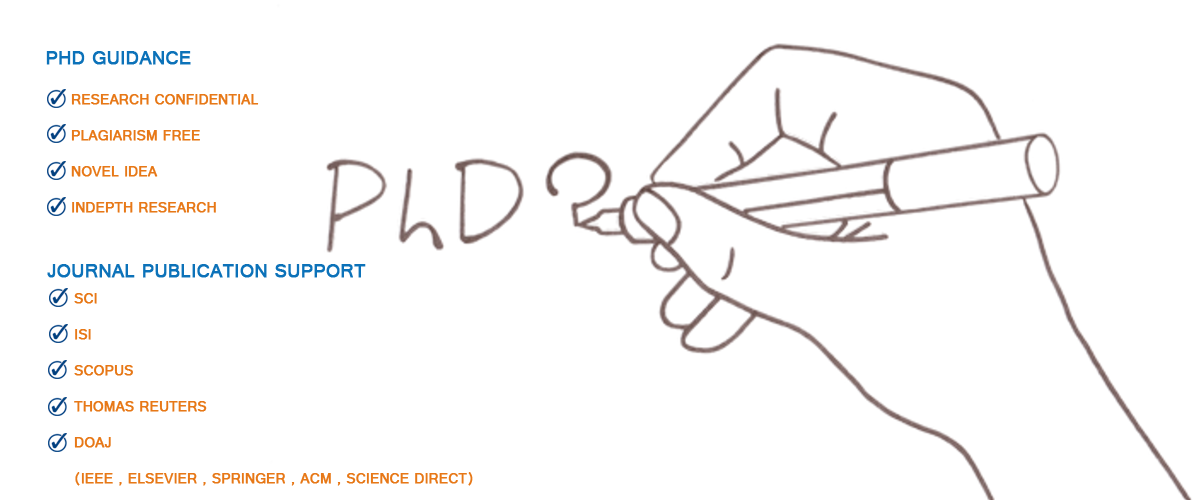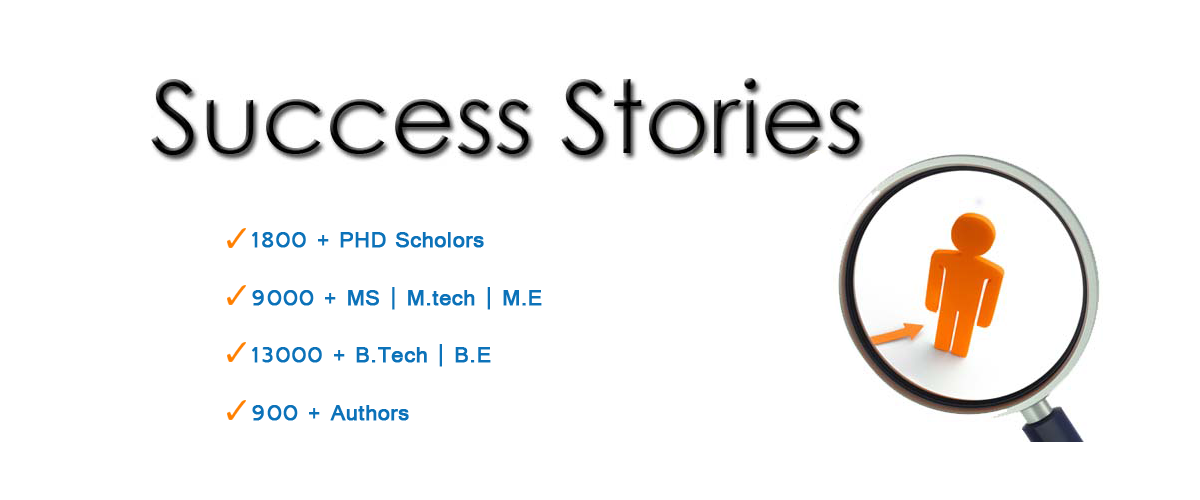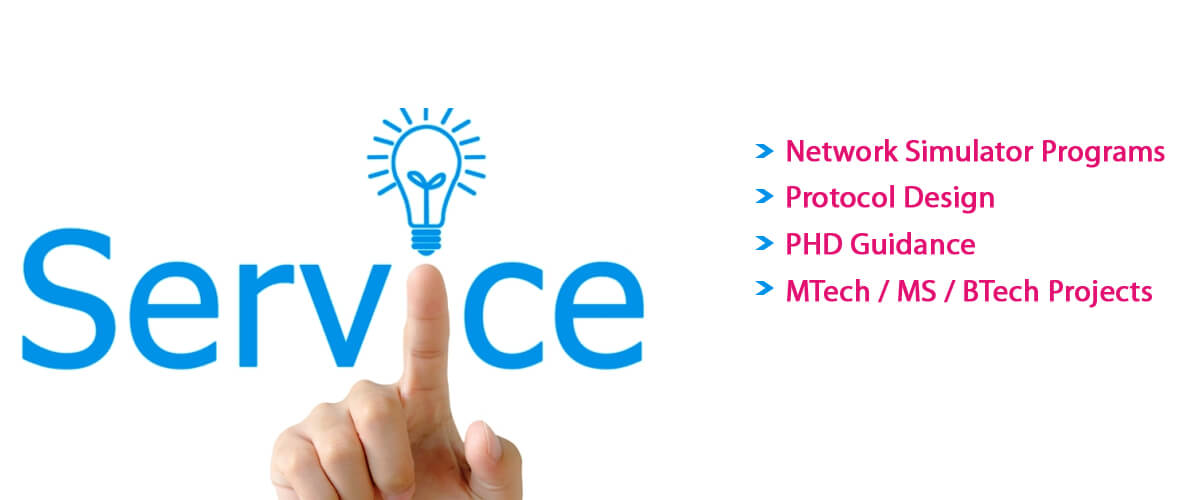Networking Information Technology Research Titles
Networking Information Technology Research Titles that are emerging and progressing rapidly with crucial advancements are shared below. Including the usage of NS2 across diverse networking research, a broad list of proposed titles are offered by us on Information Technology:
- “Performance Analysis of AODV and DSR Routing Protocols in MANETs Using NS2”
- Considering the metrics such as response time, packet delivery ratio and throughput, AODV (Ad hoc On-Demand Distance Vector) and DSR (Dynamic Source Routing) in MANETs (Mobile Ad-hoc Networks) protocols are extensively contrasted by executing this research.
- “Evaluating the Efficiency of WSN Energy Conservation Techniques in NS2”
- Without sacrificing the functionalities, improve the network durability through exploring diverse energy-efficiency techniques through carrying out a study on WSN (Wireless Sensor Networks).
- “Simulation of QoS in VoIP Services over 4G Networks with NS2”
- Focusing on packet loss, jitter and response time, perform a detailed study across 4G networks to simulate and evaluate the QoS (Quality of Service) for VoIP (Voice over IP), as this title suggests.
- “Impact of Mobility Models on the Performance of VANETs in Urban Environments Using NS2”
- On VANETs (Vehicular Ad-hoc Networks), we need to conduct extensive research. Depending on integrity, linkage and adaptability, inquire about various mobility frameworks on how it impacts the performance of the network.
- “NS2 Simulation of TCP Variants Under Different Network Conditions”
- According to the diverse response time, loss and network traffic contexts, this study examines the specific functionalities of different TCP protocols such as TCP Vegas, TCP Reno and TCP NewReno.
- “Analyzing the Performance of SDN Controllers in Large-Scale Networks with NS2”
- In handling extensive network frameworks, the efficacy and adaptability of SDN (Software-Defined Networking) controllers are efficiently assessed through this simulation research.
- “Simulation-Based Study of Load Balancing Algorithms in Cloud Computing Environments Using NS2”
- Among cloud computing architectures, various load balancing techniques are contrasted in this project, as the title recommends. Mainly, it concentrates on effectiveness of service delivery and resource deployment.
- “Comparative Analysis of Multicast Routing Protocols in Ad-hoc Networks Through NS2 Simulations”
- As we reflect on network density, collaborative movement and multicast group size, the functionality of different multicast routing protocols is effectively evaluated through this project.
- “NS2-Based Evaluation of IPv6 Transition Mechanisms in Heterogeneous Networks”
- Regarding the integration of IPv4/IPv6 platforms, carry out an analysis based on efficiency of various mechanisms of IPv6 conversions such as Tunneling, Translation and Dual Stack.
- “Assessing the Security Vulnerabilities of IoT Protocols in Smart City Applications Using NS2”
- To detect possible security susceptibilities and suggest reduction tactics, diverse IoT (Internet of Things) protocols in smart city contexts are intensively explored by this study.
The above addressed networking areas broadly utilize the NS2 simulations to accomplish real-time research. If you are likely to perform research in networking, these project titles are highly suitable.
How to Editing for Information Technology Research
A research paper should be free from grammatical faults, typing errors and other considerable mistakes. For that, the editing process is more significant. In order to guide you in editing your research paper, we propose an extensive guide with simple descriptions:
- Content and Structure Analysis
- Thesis Statement: Make sure of our paper, whether it includes an obvious and brief thesis statement. It must assist our each point or perspective.
- Sequential Flow: Structure of our paper needs to be verified. Including explicit conversions, each section must logically flow into subsequent parts. For example, a basic structure involves introduction, literature review, methodology, findings, discussion and conclusion or terminating point.
- Argument Capacity: Potential capability of our arguments should be evaluated. To assist our demands, assure whether we offer enough citations and proper proofs. An obvious objective must be reflected in each paragraph. For our thesis, it has to be supported effectively.
- Significance of Content: Maintain the content in a simple and brief manner. If it does not assist our results or thesis, unrelated details are required to be separated.
- Technical Authenticity
- Preciseness of Data: The authenticity of algorithms, technical data, code sections and formulas should be examined. Assure the computational findings, if it exhibited properly.
- Application of Language: Authentic and constant application of IT-specific language is meant to be assured. As applicable, make use of technical words and specify them in an accurate manner.
- Figures and Tables: In the text, verify the entire tables and figures, if it is cited, tagged and emphasized precisely. It must respect the following content and have to be explicit and interpretable for readers.
- Transparency and Interpretability
- Simplifying Complicated Concepts: Without taking a broad view, we have to classify the complicated theories into interpretable sections. If it assists us in simplifying the difficult concepts, implement analogies or instances.
- Sentence Structure: To sustain the curiosity of the audience, modify the sentence format. It is significant to ensure jumbled sections or sentences. Wordy expressions or excessive sentences are required to be obstructed.
- Active vs. Passive Voice: Even though the passive voice is suitable for scientific writing particularly for findings and methods sections, we have to use active voice more preferably to develop short and explicit statements.
- Grammar and Style
- Grammar and Punctuation: We need to rectify the typing mistakes, punctuation faults and grammatical mistakes. General problems such as accurate usage of commas, proper tense and subject-verb agreement should be taken into consideration.
- Consistency: In accordance with the style format such as IEEE and APA, assure the coherence in formatting of captions, citations and headings as well as abbreviations and language.
- References and Citations
- Authenticity: The preciseness of entire references and citations are supposed to be examined. A record in the reference list should be similar to every citation in the text and in a converse manner.
- Formatting: Based on the certain style manual, make sure of citations and references, if it is formatted properly. It could involve the application of italics or inverted commas, sort of data and punctuation.
- Formatting and Presentation
- Complying with Regulations: Encompassing the section headings, margins, font size and spacing, assure our paper, if it abides by submission procedures.
- Technical Demands: As demanded by the submission regulations or publication, ensure additional resources like datasets or codes, whether it incorporated or connected authentically.
For organizing our research paper without any errors, “Editing” is regarded as an important process. It involves the verification of authenticity, interpretability, clarity, formatting style, citations and other significant components which are elaborately discussed in this article.
Information Technology Research Topics
Information Technology Research Topics that you can prefer for your project are listed below, we come up with tailored project ideas and guide you with best simulation results.
- A unified scheme of text localization and structured data extraction for joint OCR and data mining
- Assessing employability of students using data mining techniques
- Time-related Differentiation of Complexity Costs Using Process Data Mining
- A Comparison of Data Mining Approaches on Predicting the Repayment Behavior in P2P Lending
- The mass data mining research based on the information platform of Internet of Things
- Predicting the churn of telecommunication service users using open source data mining tools
- Application of High Precision Accuracy Irrigation Based on the Fuzzy Spatial Data Mining in 4G
- Remote monitoring method of deep foundation pit operation equipment based on AIOT technology and data mining
- Improved CNN Based Feature Extraction for Data Mining
- A methodology for evaluating and selecting data mining software
- Data Mining Based Advanced Algorithm for Intrusion Detections in Communication Networks
- A detailed study on machine learning techniques for data mining
- Efficient Finger Print Image Classification and Recognition using Neural Network Data Mining
- Automatic Term Recognition Based on Data-Mining Techniques
- Applying multiple time series data mining to large-scale network traffic analysis
- Patterns of Behaviour Mediated by Cognitive Scripts and Emotional Attitudes – Context-Aware Engineering of Data Mining Systems
- Design and Implementation of Book Lending System based on Web and Data Mining Middleware
- A Data Mining Mode of Broadcasting and Television Decision Support System
- Attribute Rule performance in Data Mining for Software Deformity Prophecy Datasets Models
- Data mining techniques for employability: Systematic literature review







